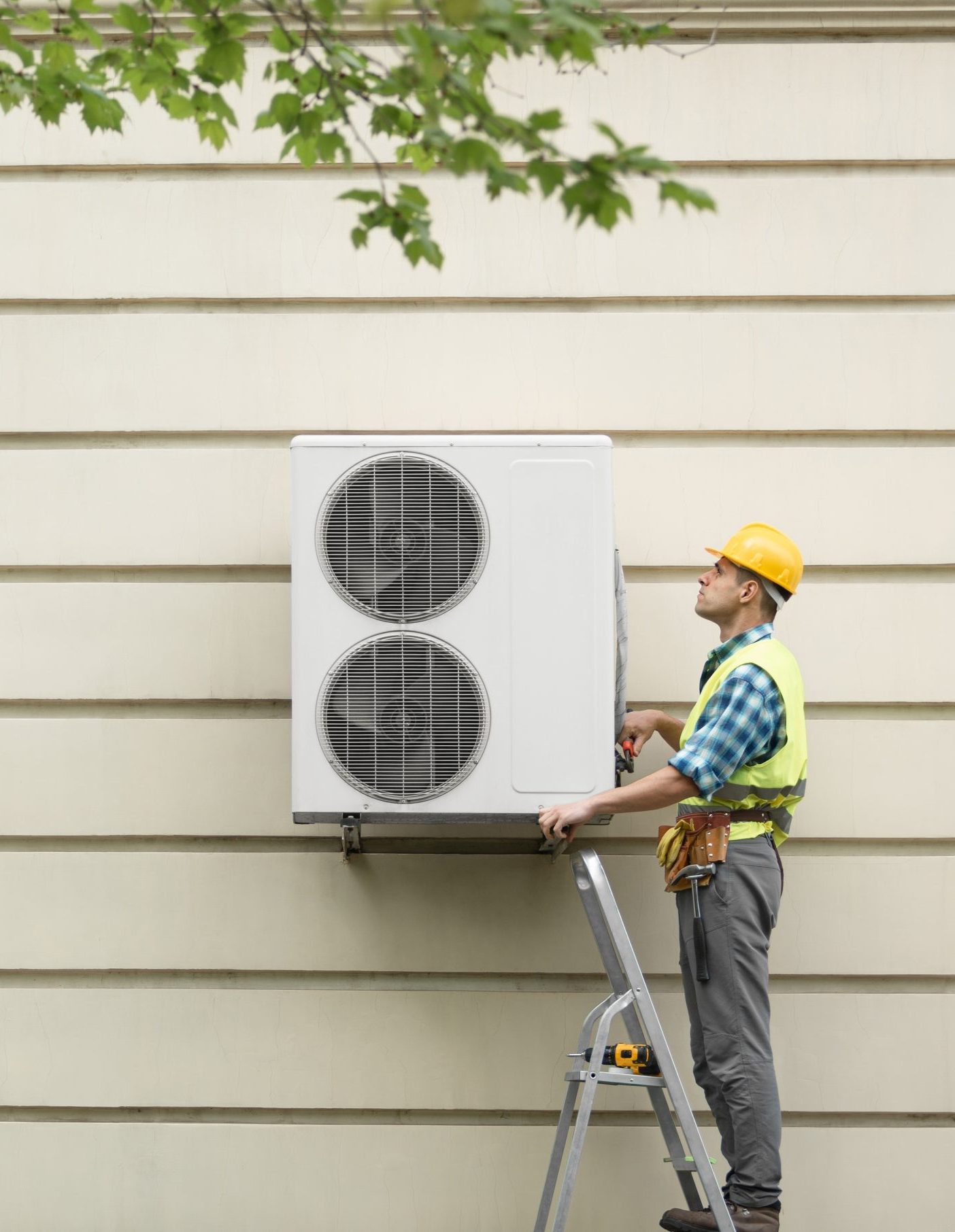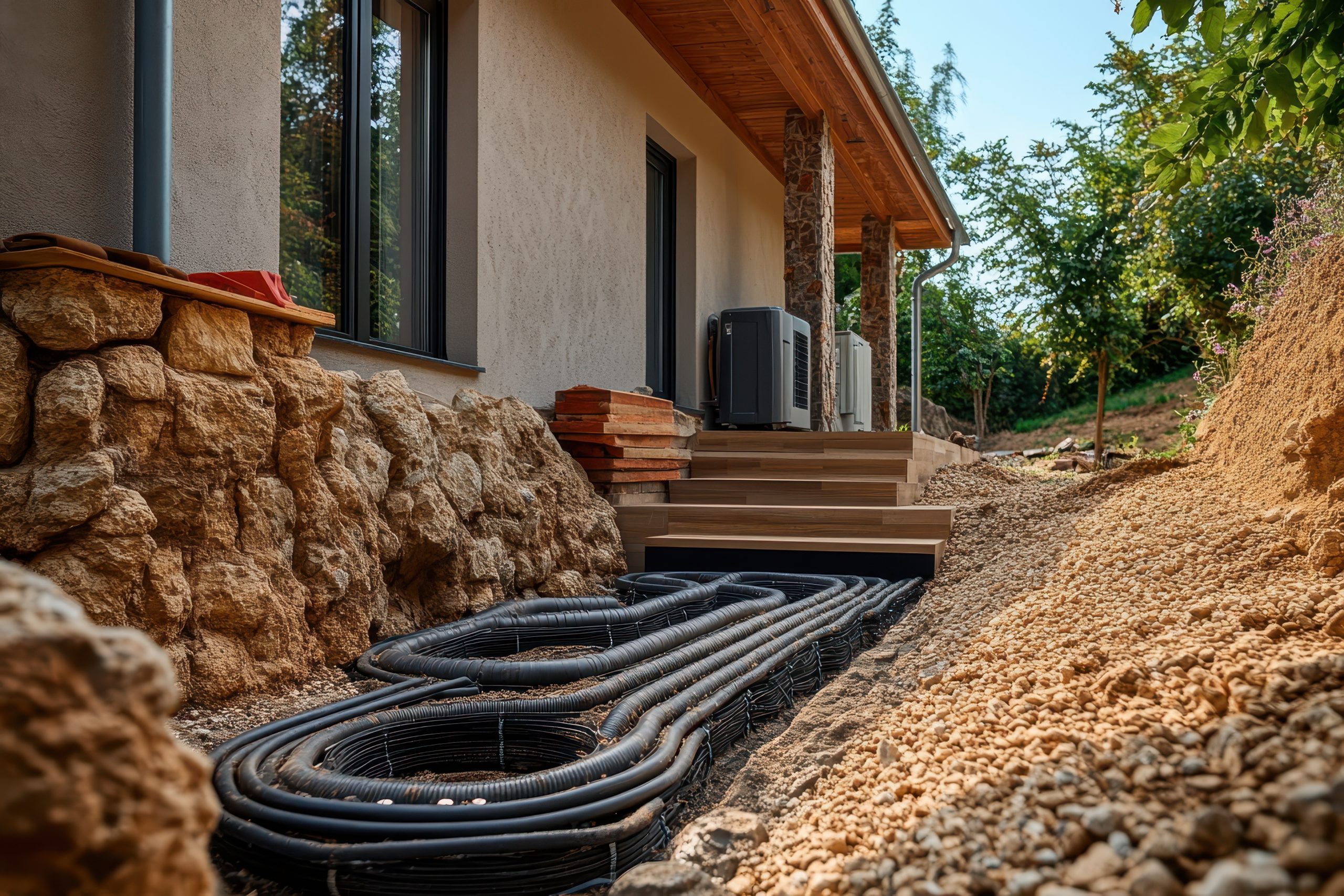
Clean Heating & Cooling
Explore heating and cooling options to make informed decisions that reduce energy use, enhance comfort, and support a greener future. Find the right solution for your needs, from traditional methods to cutting-edge technologies.

Heat Pumps
How They Work: Heat pumps transfer heat between the indoors and outdoors. They work as both heaters and air conditioners, making them versatile for year-round use.
Types:
- Air-Source Heat Pumps: Extract heat from the outside air, even in cold temperatures.
- Ground-Source (Geothermal) Heat Pumps: Use the earth’s stable temperature to heat and cool your home.
Benefits:
- Energy Efficiency: Highly efficient, reducing energy consumption and costs.
- Versatility: Provides both heating and cooling.
- Environmentally Friendly: Lowers greenhouse gas emissions.
Considerations:
- Initial Cost: Higher upfront cost, but savings on energy bills can offset this over time. For additional information see this price guide.
- Installation: Requires professional installation to ensure optimal performance.

Geothermal Systems
How They Work: Geothermal systems use the earth’s constant temperature to heat and cool your home. Pipes buried in the ground exchange heat with the earth.
Benefits:
- High Efficiency: Offers significant energy savings and low operating costs.
- Longevity: Systems typically have a long lifespan with minimal maintenance.
- Eco-Friendly: Reduces reliance on fossil fuels and lowers carbon footprint.
Considerations:
- Installation Cost: Higher initial installation cost, but with long-term savings.
- The heat pump unit itself costs approximately $2,500 per ton, with a typical home needing a 3-to-4-ton unit. The ground loop can run from $10,000 to $30,000 depending on the type and site conditions. A 3-ton vertical well system could cost from $17,500 to $37,500 for the unit and ground loop. This rough estimate does not include the heat delivery system to the home. For retrofits, the delivery system will already be in place.
- Space Requirement: Requires land for the ground loop system, though vertical wells are an option for smaller spaces.

Wood/Pellet Stoves
How They Work: Wood and pellet stoves burn wood pellets or logs to generate heat. Pellet stoves are particularly efficient, using compressed wood or biomass pellets. They provide a cozy, traditional heating experience.
Benefits:
- Renewable Fuel: Using wood pellets is a sustainable choice, as they are made from recycled wood materials.
- Cost-Effective: Wood pellets are often less expensive than traditional fuels.
Considerations:
- Ventilation: Proper ventilation is crucial to avoid smoke buildup.
- Maintenance: Regular cleaning is required to keep the stove efficient and safe.
- Cost: Most pellet stoves cost between $1,700 and $3,000. However, a pellet stove is often cheaper to install than a conventional wood-burning heater. Many can be direct-vented to the room and do not need an expensive chimney or flue. As a result, the system’s installed cost may be less than that of a conventional wood stove.

Other Important Considerations
- Energy Efficiency Ratings: Look for systems with high efficiency ratings, such as ENERGY STAR-certified products, to ensure you are getting the best performance for your money.
- Incentives and Rebates: Take advantage of Maryland’s incentives and rebates for upgrading to clean or energy-efficient systems. Programs like the CEA Loan Program can help reduce upfront costs.
- Maintenance: Regular maintenance of your heating and cooling systems is essential for efficiency and longevity. Schedule annual check-ups to keep systems running smoothly.